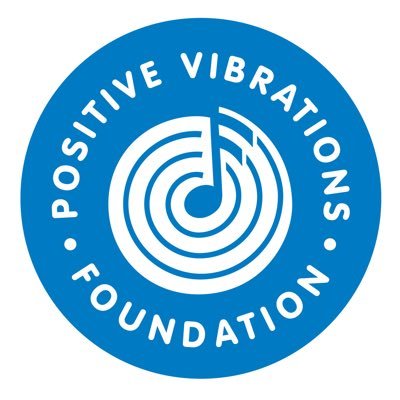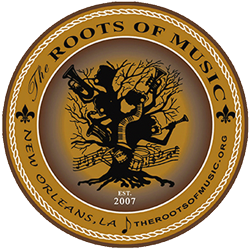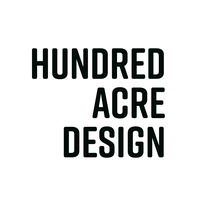Drumsville! Exhibit To Open November 8, 2018
The New Orleans Jazz Museum Presents
Drumsville!: Evolution of the New Orleans Beat
New Exhibition at the Jazz Museum Celebrating the Development of the Drum Set and Evolution of Drumming Traditions in New Orleans To Debut November 8, 2018.
NEW ORLEANS (October 11, 2018) — The New Orleans Jazz Museum will debut a new exhibition, Drumsville!: Evolution of the New Orleans Beat. Launching on November 8, 2018, the exhibit will celebrate both the New Orleans Tricentennial and International Drum Month, along with the development of the drum kit in New Orleans and the ongoing evolution of rich local drumming traditions.
The exhibition opens with a reception at the New Orleans Jazz Museum, 400 Esplanade Ave., New Orleans, Thursday, November 8, from 6 p.m. to 8 p.m. The public is invited to this free opening, which will feature food from local vendors Casa Borrega and Miss Linda The YakaMein Lady, and a cash bar featuring local cocktails and Abita Beer. The Roots Of Music will open the evening with a performance, and live music will be performed throughout the event by local drum legends Uganda Roberts and Luther Gray, accompanied by renowned guitarist and banjoist Detroit Brooks. Treme Brass Band with special guest Herlin Riley will close out the evening with a second line.
“We have such an incredible collection of drum kits from some of the most talented and influential New Orleans drummers,” said Greg Lambousy, New Orleans Jazz Museum Director. “One of the most significant is Baby Dodds’ white-pearl Ludwig kit. We acquired the drums in 2000 and are excited to display them along with the kits of other New Orleans rhythmic trailblazers.”
Drumming reaches back to the eighteenth-century foundations of New Orleans—in terms of both the Africans who performed throughout the region, eventually organizing drum circles in Congo Square, and the European marching bands of the colonial militias, operas, concerts, and balls. Drumming plays a central role in the evolution of African American and local music traditions. Brass bands, which included multiple percussionists performing on bass and snare drums and cymbals, have flourished in the city throughout the eighteenth and nineteenth centuries to today.
A crucial transition in the development of the drum kit was the development of the bass drum pedal, which enabled a single drummer to simultaneously perform on multiple drums and cymbals. One of the earliest bass pedals was used by New Orleans drummer Edward “Dee Dee” Chandler. The only extant photograph of Chandler, dated 1896, shows his rudimentary bass pedal in the lower left corner of a band portrait.
"Drumsville! The Evolution of the New Orleans Beat coincides perfectly with the city's Tricentennial,” added Robert H. Cataliotti, Music Critic and Guest Curator of Drumsville! “The exhibit traces the essential and innovative role that drumming has played from the Sunday gathering of people of African descent in nineteenth century Congo Square to today's thriving music scene. New Orleans drummers were central to the development of the drum set, and the beats they created and continue to create are definitive in jazz — traditional to modern, R&B, rock 'n roll and funk."
In 1909, The Ludwig Company patented a bass drum pedal, and that, along with the invention of a snare drum stand, launched the development of the drum kit, perfectly in sync with the blossoming of jazz. New Orleans drummers were at the forefront in defining what it means to play this new, distinctively American, instrument.
Probably the most renowned aspect of New Orleans rhythmic legacy is the “second line” rhythm that emerged from brass band parades. New Orleans drummers adapted this distinct rhythm to many musical contexts, including brass bands, traditional and modern jazz, rhythm and blues, rock and roll, and funk. The second line tradition continues to this day in the Crescent City.
“New Orleans is a Beat town, whether it’s the backbeat, front beat, second line, drop 4, triggerman, or stanky funk,” said David Kunian, New Orleans Jazz Museum Music Curator. “This exhibit demonstrates how that evolved from Congo Square and First Peoples to whatever you are hearing tonight on Oak Street, N. White Street, or St. Claude Avenue. You can see the first run of bass pedals, Baby Dodds’ drum set, and many other examples that make it as easy to see as the metal on your cymbals: In New Orleans, drums are Queen!”
Drumsville! will begin with the legacy of Congo Square, including traditional African percussion instruments from the Southern University at New Orleans African Art Collection, and move through the brass band tradition to the introduction of the bass drum pedal and development of the drum kit and the extensive legacy of drummers to emerge in New Orleans over the past century.
Drawing upon the Jazz Museum’s large and unique archive of historic instruments, drum kits and equipment will be featured from such New Orleans legends as Papa Jack Laine, Baby Dodds, Paul Barbarin, Louis Barbarin, Cie Frazier, Ray Bauduc, CoCoMo Joe Barthlemy, Earl Palmer, Idris Muhammad, Zigaboo Modeliste, and James Black. In addition, contemporary New Orleans drum masters Johnny Vidacovich, Herlin Riley, Shannon Powell, and Stanton Moore will generously equipment from their personal collections.
Drumsville! will also examine related traditions of improvised percussion instruments and the tambourine, and conclude with the next generation of drummers, testifying to the vibrancy of the city’s drumming tradition.
Drumsville! will be on display through March 15, 2019.
Daily admission to the Jazz Museum is $6.00 for adults; $5.00 for students with I.D., senior citizens (65+) and members of the military. School groups meeting required criteria and children 6 and under are admitted free. Located at 400 Esplanade Avenue, New Orleans, Louisiana 70116 with an additional entrance at 401 Barracks Street, the Museum resides at the intersection of Esplanade and Decatur Streets in the French Quarter of New Orleans. The New Orleans Jazz Museum is a Louisiana State Museum. Founded in 1906, Louisiana State Museum is a system of National Historic Landmarks and architecturally significant structures housing a half-million artifacts that showcase the state’s history and culture. For more information, please call 504-568-2566 or visit www.nolajazzmuseum.org.
About The New Orleans Jazz Museum
The New Orleans Jazz Museum celebrates jazz in the city where it was born. Through dynamic interactive exhibits, multigenerational educational programming, research facilities and engaging musical performances, the music New Orleans made famous is explored in all its forms. Through partnerships with local, national and international educational institutions, the New Orleans Jazz Museum promotes the global understanding of jazz as one of the most innovative, historically pivotal musical art forms in world history. For more information on upcoming performances, visit www.nolajazzmuseum.org. Follow us on Facebook, Twitter and Instagram @NOLAJazzMuseum.
Sponsors & Partners
Media Contacts
Baylee Badawy
Digital / Media Strategist
216-372-8268
bbadawy@crt.la.gov
www.nolajazzmuseum.org
Greg Lambousy
Director
504-427-2190
glambousy@crt.la.gov
www.nolajazzmuseum.org
David Kunian
Music Curator
504-568-6976
dkunian@crt.la.gov
www.nolajazzmuseum.org












